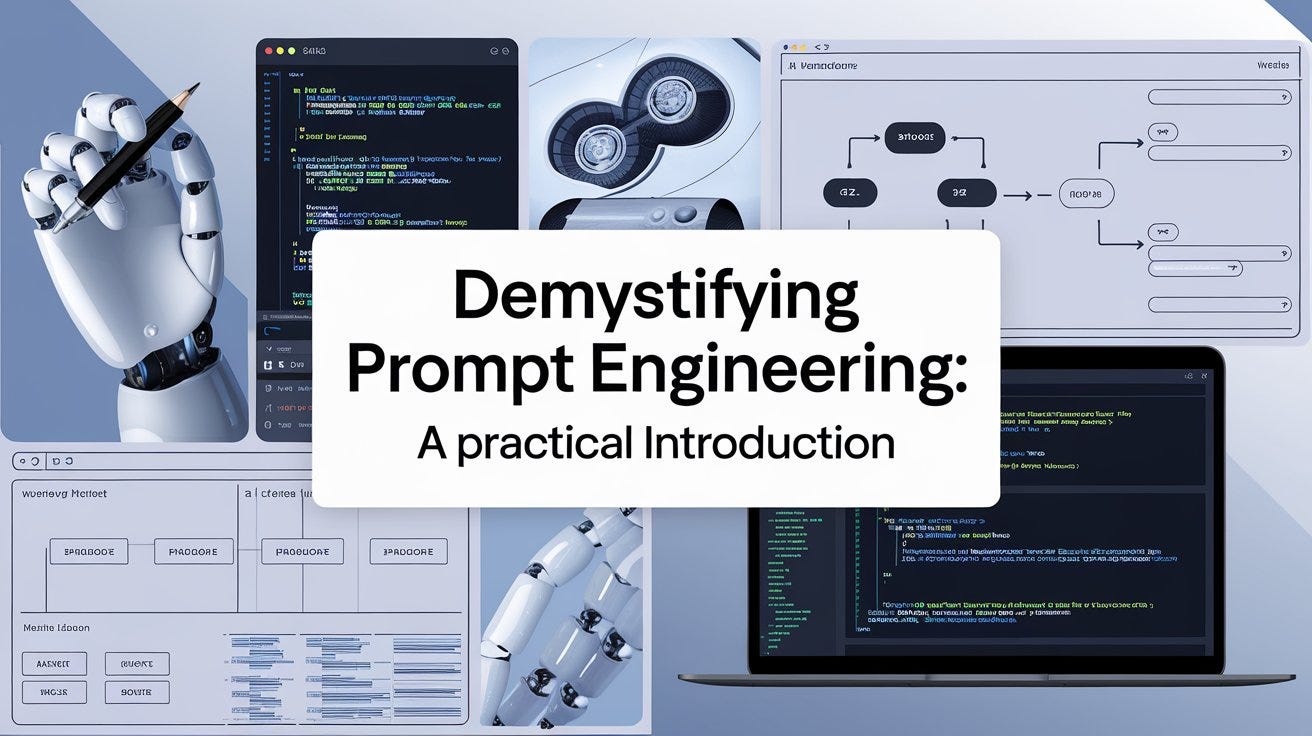Prompt engineering has emerged as a critical skill in the age of Large Language Models (LLMs). These powerful AI systems, trained on massive datasets of text and code, are capable of generating human-quality text, translating languages, writing different kinds of creative content, and answering your questions in an informative way. However, unlocking the full potential of LLMs hinges on the quality of the input they receive – the prompt. This post provides a clear explanation of what prompt engineering is, why it matters, and lays the groundwork for understanding more advanced techniques.
What is Prompt Engineering?
At its core, prompt engineering involves crafting effective inputs, or "prompts," for LLMs to elicit desired outputs. Think of it as learning to speak the language of AI. Just as a musician needs to understand musical notation to create a melody, a prompt engineer needs to understand how LLMs interpret and respond to different types of input.
LLMs operate by identifying patterns and relationships within the vast amounts of data they've been trained on. When given a prompt, the model uses these learned patterns to predict the most likely continuation or response. Therefore, the way a prompt is phrased, structured, and contextualized directly influences the model's output.
Prompt engineering is not simply about asking a question. It's about strategically designing the input to guide the LLM towards generating accurate, relevant, and useful responses. It's about understanding the nuances of language and how they impact the model's interpretation.
The Importance of Effective Prompts
LLMs, while incredibly powerful, can be sensitive to phrasing and context. A poorly constructed prompt can lead to a variety of undesirable outcomes, including:
Irrelevant Outputs: The model might generate responses that are tangential to the user's intended query.
Nonsensical Outputs: The model might produce text that is grammatically correct but lacks coherence or meaning.
Bias Amplification: If the prompt is not carefully crafted, it can inadvertently reinforce existing biases present in the training data.
Harmful Outputs: In some cases, poorly designed prompts can lead to the generation of offensive, discriminatory, or misleading content.
Prompt engineering addresses these challenges by focusing on several key principles:
Clarity: Ensuring the prompt is unambiguous and clearly conveys the user's intent. The model should have a clear understanding of what information or action is being requested.
Specificity: Providing sufficient context and constraints to guide the model's response. The more specific the prompt, the more focused and relevant the output will be.
Structure: Using specific keywords, delimiters, or formatting to structure the prompt effectively. This can help the model understand the different parts of the prompt and their relationships.
Iteration: Prompt engineering is often an iterative process. It involves experimenting with different phrasings and structures to find the most effective approach.
Practical Examples of Prompt Engineering
Let's illustrate the importance of prompt engineering with a few examples:
Example 1: Generating Creative Content
Poor Prompt: "Write a story."
This prompt is too vague. The LLM has no direction regarding the genre, characters, plot, or tone of the story. The output could be anything from a children's tale to a science fiction epic.
Improved Prompt: "Write a short science fiction story about a lone astronaut who discovers a habitable planet orbiting a distant star. The story should have a suspenseful tone and focus on the astronaut's initial exploration of the planet."
This improved prompt provides much more specific instructions, guiding the LLM to generate a more focused and relevant story.
Example 2: Answering Questions
Poor Prompt: "What is the capital of Australia?"
While this prompt is relatively straightforward, it doesn't specify what kind of answer is expected. The model might simply respond with "Canberra."
Improved Prompt: "Provide a concise answer stating the official capital city of the Commonwealth of Australia, along with a brief explanation of how it was chosen as the capital."
This improved prompt requests a more detailed response, including historical context.
Example 3: Code Generation
Poor Prompt: "Write some code to sort a list."
This prompt is too general. It doesn't specify the programming language, the sorting algorithm, or the type of list.
Improved Prompt: "Write Python code that implements the bubble sort algorithm to sort a list of integers in ascending order. Include comments explaining the code's functionality."
This improved prompt provides specific instructions, leading to a more useful and targeted code output.
Example 4: Summarization
Poor Prompt: "Summarize this article." (Followed by a lengthy article)
While functional, this prompt could lead to a summary that is too long or focuses on less important details.
Improved Prompt: "Summarize this article in three sentences, focusing on the main arguments presented by the author." (Followed by a lengthy article)
This revised prompt gives a clear constraint on length and directs the model to focus on the key arguments.
Advanced Prompt Engineering Techniques
Beyond clarity, specificity, and structure, several advanced techniques can further enhance the effectiveness of prompts:
Few-Shot Learning: Providing the model with a few examples of input-output pairs to demonstrate the desired behavior.
Chain-of-Thought Prompting: Encouraging the model to explicitly reason through a problem step-by-step before providing a final answer.
Role Prompting: Instructing the model to adopt a specific persona or role, such as "act as a historian" or "act as a software engineer."
Prompt Templates: Creating reusable prompt structures that can be adapted for different tasks.
The Iterative Nature of Prompt Engineering
It's important to remember that prompt engineering is often an iterative process. It rarely happens that the first prompt you create is the perfect one. You might need to experiment with different phrasings, structures, and techniques to achieve the desired results. This involves:
Experimentation: Trying out different prompts and observing the outputs.
Analysis: Evaluating the outputs and identifying areas for improvement.
Refinement: Modifying the prompts based on the analysis.
Looking Ahead
As LLMs continue to evolve, prompt engineering will remain a crucial skill for anyone seeking to interact with and leverage these powerful AI systems.


